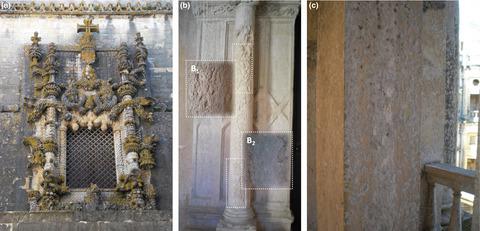当前位置:
X-MOL 学术
›
Microbiologyopen
›
论文详情
Our official English website, www.x-mol.net, welcomes your feedback! (Note: you will need to create a separate account there.)
Assessment of microbiota present on a Portuguese historical stone convent using high-throughput sequencing approaches.
MicrobiologyOpen ( IF 3.4 ) Pub Date : 2020-04-30 , DOI: 10.1002/mbo3.1030 Tânia Rosado 1 , Luís Dias 1, 2 , Mónica Lança 2 , Carla Nogueira 2 , Rita Santos 2 , Maria Rosário Martins 1, 2 , António Candeias 1, 2 , José Mirão 1, 3 , Ana Teresa Caldeira 1, 2
MicrobiologyOpen ( IF 3.4 ) Pub Date : 2020-04-30 , DOI: 10.1002/mbo3.1030 Tânia Rosado 1 , Luís Dias 1, 2 , Mónica Lança 2 , Carla Nogueira 2 , Rita Santos 2 , Maria Rosário Martins 1, 2 , António Candeias 1, 2 , José Mirão 1, 3 , Ana Teresa Caldeira 1, 2
Affiliation

|
The study performed on the stone materials from the Convent of Christ revealed the presence of a complex microbial ecosystem, emphasizing the determinant role of microorganisms on the biodecay of this built cultural heritage. In this case study, the presence of Rubrobacter sp., Arthrobacter sp., Roseomonas sp., and Marinobacter sp. seems to be responsible for colored stains and biofilm formation while Ulocladium sp., Cladosporium sp., and Dirina sp. may be related to structural damages. The implementation of high‐throughput sequencing approaches on the Convent of Christ's biodecay assessment allowed us to explore, compare, and characterize the microbial communities, overcoming the limitations of culture‐dependent techniques, which only identify the cultivable population. The application of these different tools and insights gave us a panoramic view of the microbiota thriving on the Convent of Christ and signalize the main biodeteriogenic agents acting on the biodecay of stone materials. This finding highlighted the importance of performing metagenomic studies due to the improvements and the reduced amount of sample DNA needed, promoting a deeper and more detailed knowledge of the microbiota present on these dynamic repositories that support microbial life. This will further enable us to perform prospective studies in quarry and applied stone context, monitoring biogenic and nonbiogenic agents, and also to define long‐term mitigation strategies to prevent biodegradation/biodeterioration processes.
中文翻译:

使用高通量测序方法评估葡萄牙历史石材修道院上存在的微生物群。
对基督修道院的石材进行的研究表明,存在着一个复杂的微生物生态系统,强调了微生物对这种建筑文化遗产的生物腐烂的决定性作用。在此案例研究中,存在红杆菌属,节杆菌属,玫瑰单胞菌属和马氏杆菌属。Ulocladium sp。,Cladosporium sp。和Dirina似乎负责色斑和生物膜的形成sp。可能与结构损坏有关。在基督修道院的生物衰变评估中实施高通量测序方法,使我们能够探索,比较和表征微生物群落,克服了仅依赖可培养种群的依赖文化的技术的局限性。这些不同工具和见解的应用为我们提供了在基督修道院上蓬勃发展的微生物群的全景图,并预示了作用于石材生物衰变的主要生物致死剂。这一发现强调了进行宏基因组学研究的重要性,这是由于所需的样品DNA有所改善和数量减少,从而促进了对这些支持微生物生命的动态库中存在的微生物群的更深入和更详细的了解。
更新日期:2020-04-30
中文翻译:

使用高通量测序方法评估葡萄牙历史石材修道院上存在的微生物群。
对基督修道院的石材进行的研究表明,存在着一个复杂的微生物生态系统,强调了微生物对这种建筑文化遗产的生物腐烂的决定性作用。在此案例研究中,存在红杆菌属,节杆菌属,玫瑰单胞菌属和马氏杆菌属。Ulocladium sp。,Cladosporium sp。和Dirina似乎负责色斑和生物膜的形成sp。可能与结构损坏有关。在基督修道院的生物衰变评估中实施高通量测序方法,使我们能够探索,比较和表征微生物群落,克服了仅依赖可培养种群的依赖文化的技术的局限性。这些不同工具和见解的应用为我们提供了在基督修道院上蓬勃发展的微生物群的全景图,并预示了作用于石材生物衰变的主要生物致死剂。这一发现强调了进行宏基因组学研究的重要性,这是由于所需的样品DNA有所改善和数量减少,从而促进了对这些支持微生物生命的动态库中存在的微生物群的更深入和更详细的了解。


























 京公网安备 11010802027423号
京公网安备 11010802027423号